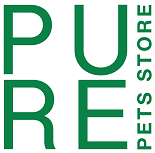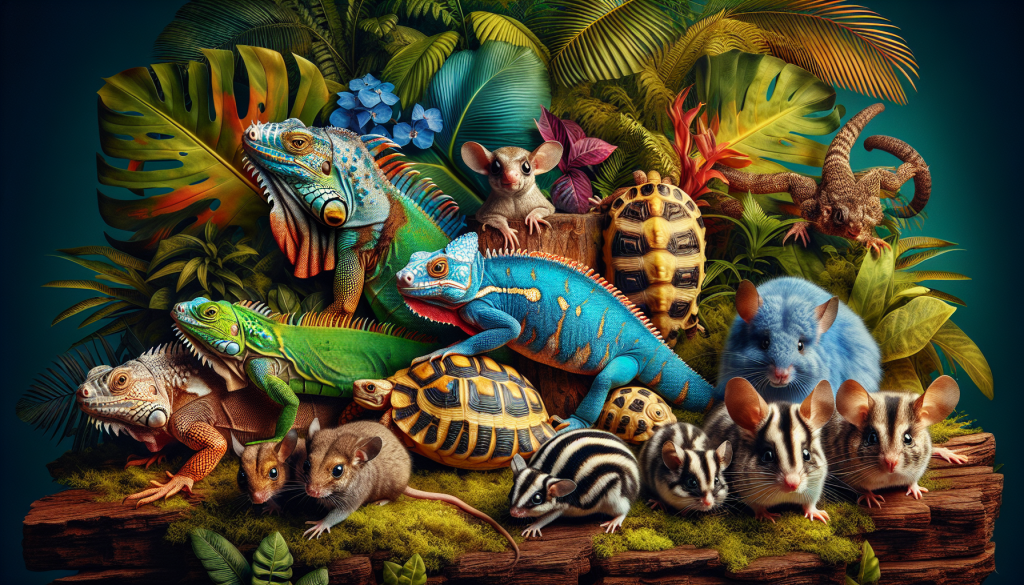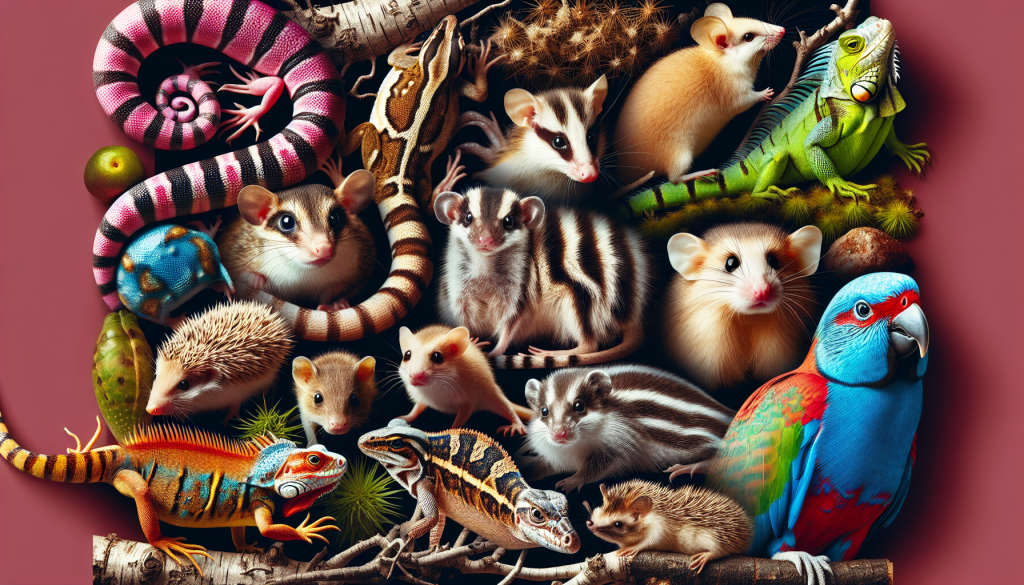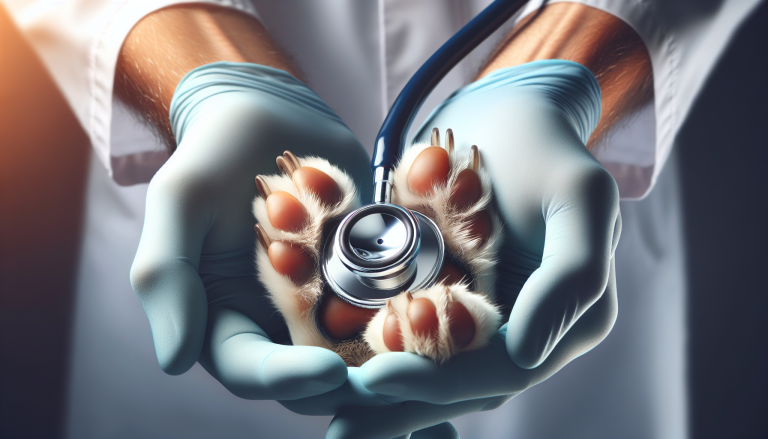Imagine having a furry friend that is utterly unique, captivating, and unlike any other pet you’ve ever seen. In this article, we will explore the world of exotic pets and dive into the care they require. From rare reptiles to fascinating creatures from distant lands, we will unveil the most popular exotic pets and guide you on how to provide them with the utmost love and care they need. Get ready to embark on a thrilling journey filled with interesting facts and helpful tips that will ensure you and your extraordinary companion have a lifelong bond.
Table of Contents
ToggleBirds
Types of popular pet birds
When it comes to popular pet birds, there are several species that stand out. Some of the most commonly kept pet birds include budgies (also known as parakeets), cockatiels, lovebirds, and finches. These birds are known for their vibrant colors, sociable nature, and relatively low maintenance requirements. Each species has its unique characteristics and care needs, so it’s essential to research and choose a bird that aligns with your lifestyle and preferences.
Basic care for pet birds
Providing proper care for pet birds is crucial to ensure their health and well-being. Start by setting up a spacious cage that allows your bird to move around comfortably. Ensure that the cage bars are appropriately spaced to prevent any injuries or escapes. It’s also important to provide perches of different sizes and materials to keep your bird’s feet healthy.
Regular cleaning of the cage is essential to maintain hygiene. Change the papers or cage liners daily, and thoroughly clean the cage and accessories on a weekly basis. Keep in mind that birds are highly sensitive to chemicals, so use bird-safe cleaning products. Birds also enjoy bath time, so providing a shallow dish of water in their cage for bathing is recommended.
Feeding and nutrition
Feeding your pet bird a balanced diet is essential for its overall health. Most pet birds thrive on a combination of formulated bird pellets, fresh fruits and vegetables, and occasional treats. Consult with your avian veterinarian or a bird specialist to determine the specific dietary needs of your particular bird species.
Ensure that your bird always has access to fresh, clean water. Some bird species also enjoy bathing in their water dishes, so provide a separate dish for them to engage in this natural behavior.
Housing and environment
Along with a spacious cage, creating a stimulating and bird-friendly environment is crucial for your pet bird’s well-being. Birds are intelligent and social creatures, so it’s essential to provide them with plenty of mental stimulation and social interaction. Consider providing toys, such as bells, ropes, and puzzles, to keep your bird mentally engaged.
Additionally, birds need exposure to natural light and fresh air. Place their cage near a window, but ensure that direct sunlight doesn’t overheat the cage. Offering your bird a safe, supervised outdoor time in a secure aviary or harness training can also provide additional mental and physical stimulation.
Grooming and hygiene
Regular grooming is necessary to keep your bird healthy and comfortable. One crucial aspect of grooming is maintaining your bird’s beak and nails. Consult with an avian veterinarian or a bird groomer for guidance on safely trimming your bird’s beak and nails.
Birds also require regular bathing or misting to ensure proper feather health. Some birds enjoy being misted with a spray bottle, while others prefer a shallow dish of water for bathing. Observe your bird’s preferences and provide a suitable bathing method accordingly.
Training and socialization
Training and socialization are essential for developing a strong bond with your pet bird. Start by gradually introducing your bird to your presence and surroundings. Offer treats and rewards for positive behaviors, such as stepping onto your finger or interacting with toys. Gradually build trust and take small steps towards training your bird to perform basic commands or tricks.
Providing opportunities for social interaction is crucial for your bird’s mental and emotional well-being. Spend time speaking and interacting with your bird daily. Birds are known for mimicking sounds and words, so talking to them can be a fun and engaging experience.
Reptiles
Types of popular pet reptiles
Reptiles are fascinating creatures that have become popular pets among reptile enthusiasts. Some of the most popular pet reptiles include leopard geckos, bearded dragons, corn snakes, and ball pythons. Each species has its unique characteristics and care requirements, so it’s essential to research and choose a reptile that suits your lifestyle and level of experience.
Basic care for pet reptiles
Providing the right care for your pet reptile is essential for its health and well-being. One of the most critical aspects of reptile care is creating a proper habitat or enclosure that mimics their natural environment. This includes providing suitable substrate, temperature gradients, and hiding spots.
Reptiles are ectothermic, meaning they rely on external sources of heat to regulate their body temperature. It’s crucial to provide a temperature gradient within the enclosure to allow your reptile to thermoregulate effectively. Use heat sources such as heat lamps or under-tank heaters to achieve the appropriate temperature range.
Temperature and lighting requirements
Proper lighting is another crucial factor in reptile care. Reptiles require specific wavelengths of light, including UVB, to synthesize vitamin D3 and metabolize calcium effectively. UVB lighting can be provided through specialized bulbs designed for reptile enclosures. Be sure to research the specific lighting requirements for your reptile species and provide the appropriate lighting setup.
Monitoring temperature and humidity levels within the enclosure is also vital. Use thermometers and hygrometers to ensure the temperature and humidity are within the recommended range for your reptile species. Regularly clean and disinfect the enclosure to maintain a clean and hygienic environment for your pet reptile.
Feeding and nutrition
Feeding your pet reptile a nutritionally balanced diet is crucial for its overall health and vitality. Most reptiles are carnivorous, while some may be omnivorous or herbivorous. Research and understand the dietary needs of your specific reptile species to provide the appropriate food.
Offer a variety of prey items, such as insects, worms, rodents, or specialized reptile diets. Proper supplementation with vitamins and minerals may also be necessary. Consult with a reptile specialist or an exotic veterinarian to ensure you are meeting all the nutritional requirements of your pet reptile.
Habitat setup and maintenance
Creating a suitable habitat for your pet reptile is crucial for its well-being. Start with an appropriately sized enclosure that allows your reptile to move and explore. Provide enough hiding spots and branches or rocks for climbing and basking.
Choose the correct substrate for your reptile species, ensuring that it is safe and easy to clean. Regularly clean the enclosure and remove any waste or uneaten food to maintain a hygienic environment. Some reptiles also benefit from regular misting or a humidifier to maintain adequate humidity levels.
Handling and socialization
While some reptiles tolerate handling, not all reptiles enjoy frequent human interaction. It’s important to understand and respect your reptile’s comfort level when it comes to handling. If your reptile is calm and accustomed to handling, ensure that you are supporting its body properly and not placing any unnecessary stress on it.
Socialization for reptiles can involve providing them with appropriate mental stimulation and environmental enrichment. This can include introducing new hiding spots, offering varied prey items, or rotating the arrangement of items within the enclosure. Observe your reptile and find enrichment activities that promote their natural behaviors and mental well-being.
Rodents
Types of popular pet rodents
Rodents are small and adorable creatures that make popular pets for many people. Some of the most commonly kept pet rodents include hamsters, guinea pigs, rats, and gerbils. Each of these species has its unique characteristics and care needs, so it’s important to choose a rodent that suits your lifestyle and preferences.
Basic care for pet rodents
Providing proper care for pet rodents is crucial to ensure their health and happiness. Start by providing a spacious cage with appropriate bedding material that allows your rodent to burrow and explore. Ensure that the cage has multiple levels or platforms for climbing and provide hiding spots for your rodent to retreat to.
Regular cleaning of the cage is essential to maintain a clean and hygienic environment for your pet rodent. Remove any uneaten food, soiled bedding, and waste daily. Clean and disinfect the cage and accessories weekly to prevent the buildup of harmful bacteria and odors.
Cage setup and maintenance
When setting up your rodent’s cage, consider providing appropriate chew toys and items that allow for physical and mental stimulation. Rodents have continuously growing teeth, so offering chew toys helps keep their teeth healthy and prevents overgrowth.
Ensure that the cage is located in a well-ventilated area away from direct sunlight and drafts. Optimal temperature and humidity levels vary depending on the species, so research the specific requirements for your pet rodent. Provide a water bottle or dish that is easily accessible for your rodent to drink from.
Feeding and nutrition
Proper nutrition is key to ensuring your pet rodent’s overall health and well-being. Most pet rodents require a combination of commercial rodent pellets and a variety of fresh fruits, vegetables, and occasional treats. Consult with a rodent specialist or veterinarian to determine the specific dietary needs of your particular rodent species.
Ensure that your rodent always has access to fresh, clean water. Regularly check the water bottle or dish to ensure it is working properly and not contaminated. Avoid overfeeding your rodent, as obesity can lead to various health issues.
Grooming and hygiene
Grooming and maintaining proper hygiene are important aspects of caring for your pet rodent. Some rodents, such as hamsters and gerbils, are proficient self-groomers and require minimal assistance. However, others, such as guinea pigs and rats, benefit from regular grooming and nail trimming.
To promote good hygiene, provide a dust bath for certain species, such as chinchillas or degus. This helps them keep their fur clean and free from excessive oils. Regularly check your rodent’s teeth, nails, and fur for any signs of overgrowth, injury, or parasites. If you notice any issues or abnormalities, consult with a rodent specialist or veterinarian.
Enrichment and exercise
Providing enrichment and opportunities for exercise are crucial for keeping your pet rodent mentally stimulated and physically active. Include a variety of toys, such as tunnels, wheels, and chew toys, to keep your rodent entertained. Regularly rotate and introduce new toys to prevent boredom.
Allow your rodent supervised time outside of the cage to explore and exercise in a safe and secure area. Provide tunnels, obstacle courses, and toys to encourage natural behaviors and physical activity. Always supervise your rodent during playtime and ensure they cannot escape or chew on any dangerous items.
Aquatic Pets
Types of popular pet fish
Aquatic pets, specifically fish, are a popular choice for many pet owners. Some of the most commonly kept pet fish include bettas, goldfish, guppies, and tetras. Each species has its unique characteristics and care requirements, so it’s important to research and choose fish that are compatible with your aquarium setup and care abilities.
Basic care for pet fish
Proper care for pet fish involves creating a suitable aquatic environment and maintaining the water quality. Start by setting up an appropriately sized aquarium with the necessary filtration system. Consider the specific needs of your chosen fish species, such as water temperature and compatibility with other fish.
Regular monitoring of water parameters is essential to ensure a healthy environment for your fish. This includes testing for pH, ammonia, nitrite, and nitrate levels. Regular water changes and maintenance are also necessary to remove any accumulated waste or debris.
Tank setup and maintenance
When setting up your fish tank, provide appropriate substrate, hiding spots, and decorations that mimic the fish’s natural habitat. Research the specific needs of your chosen fish species and provide suitable plants and ornaments.
Ensure that the tank is located away from direct sunlight and drafts to prevent fluctuations in temperature and water quality. Regularly clean and maintain the aquarium, including the filter, to ensure proper functioning and prevent the buildup of harmful bacteria.
Water quality and filtration
Maintaining optimal water quality is crucial for the health and well-being of your pet fish. Use a reliable water testing kit to monitor ammonia, nitrite, nitrate, and pH levels regularly. Keep in mind that different fish species have specific water parameter requirements, so be sure to research and adjust accordingly.
Providing proper filtration is essential for maintaining water quality. Choose a filtration system suitable for the size and needs of your aquarium. Regularly clean and replace filter media as recommended by the manufacturer to ensure efficient filtration.
Feeding and nutrition
Feeding your pet fish a balanced diet is essential for their growth and overall health. Most pet fish thrive on a combination of high-quality commercial fish flakes or pellets, supplemented with occasional live or frozen foods. Research the specific dietary needs of your fish species and provide appropriate food.
Avoid overfeeding your fish, as excess food can lead to water quality issues and health problems. Feed your fish small amounts multiple times a day, ensuring that they consume the food within a few minutes. Remove any uneaten food to prevent water contamination.
Healthcare and disease prevention
Maintaining good fish health involves regular observation and prompt action if any signs of illness or disease are detected. Look out for changes in behavior, appetite, or physical appearance. Common signs of fish health issues include lethargy, loss of color, fin damage, or unusual swimming patterns.
Consult with an aquatic veterinarian or fish specialist if you suspect any health issues. Quarantine new fish before introducing them to the main aquarium to prevent the spread of diseases. Additionally, maintain proper water quality and hygiene to minimize the risk of illness and disease.
Amphibians
Types of popular pet amphibians
Amphibians, such as frogs, toads, and salamanders, are fascinating pets that require specific care and attention. Some of the most popular pet amphibians include African dwarf frogs, red-eyed tree frogs, fire-bellied toads, and axolotls. Each species has its unique characteristics and care requirements, so it’s important to research and choose an amphibian that suits your abilities and interests.
Basic care for pet amphibians
Providing proper care for pet amphibians involves creating a suitable habitat that mimics their natural environment. Amphibians have permeable skin and require a specific level of humidity and moisture to ensure their health and hydration. Research the specific needs of your chosen amphibian species to provide the appropriate habitat setup.
It’s important to note that some amphibians require access to both land and water, while others are fully aquatic. Ensure that the enclosure is spacious enough to accommodate the amphibian’s needs and provides suitable hiding spots, plants, and substrate.
Habitat setup and maintenance
When setting up the habitat for your pet amphibian, consider the specific requirements of the species. Provide appropriate substrate, such as moss or soil, to maintain the necessary humidity levels. Include live plants and hiding spots to offer a sense of security and promote natural behaviors.
Maintaining the humidity and temperature levels within the enclosure is crucial for your amphibian’s health. Use a hygrometer and thermometer to monitor these levels accurately. Regularly mist the enclosure with dechlorinated water to ensure proper hydration and to create the ideal environment for your pet amphibian.
Feeding and nutrition
Feeding your pet amphibian a varied and appropriate diet is essential for its nutrition and well-being. Most amphibians require a combination of live prey, such as insects, worms, or small crustaceans. It’s important to offer a variety of food items to ensure a balanced diet.
Research the specific dietary needs of your chosen amphibian species to provide the appropriate food and feeding schedule. Ensure that any live prey items offered are gut-loaded and free from pesticides or contaminants. Consult with an amphibian specialist or veterinarian for guidance on your pet’s specific dietary requirements.
Temperature and humidity requirements
Maintaining the appropriate temperature and humidity levels is crucial for the health and survival of your pet amphibian. Amphibians are ectothermic, meaning they rely on external heat sources to regulate their body temperature. Use heat lamps or under-tank heaters to achieve the optimal temperature range for your amphibian species.
Humidity is equally important for amphibians, as many species have moist skin that aids in respiration and helps protect against dehydration. Regularly monitor and adjust the humidity levels within the enclosure by misting or using a humidifier. Consult with an amphibian specialist to determine the specific temperature and humidity requirements for your pet.
Handling and health considerations
While some amphibians tolerate handling, others are best observed and left undisturbed. It’s important to understand and respect your pet amphibian’s comfort level when it comes to handling. If handling is necessary, ensure that your hands are clean and free from any harmful substances or lotions.
Additionally, it’s crucial to maintain proper hygiene and cleanliness to prevent the spread of diseases. Amphibians can be sensitive to environmental changes and stress. Regularly observe your pet amphibian for any signs of illness, such as changes in behavior, appetite, or physical appearance. Consult with an amphibian specialist or veterinarian if you have any concerns about your pet’s health.
Invertebrates
Types of popular pet invertebrates
Invertebrates make fascinating and low-maintenance pets for those who are interested in the smaller creatures of the animal world. Some of the most popular pet invertebrates include tarantulas, scorpions, mantises, and stick insects. Each species has its unique characteristics and care requirements, so it’s important to research and choose an invertebrate that suits your preferences and comfort level.
Basic care for pet invertebrates
Caring for pet invertebrates involves providing a suitable enclosure, appropriate feeding, and maintaining the necessary environmental conditions. While invertebrates have diverse care needs, some common aspects include providing a secure enclosure, suitable substrate, and areas for hiding and molting.
Regular observation is crucial to monitor the health and condition of your pet invertebrate. Look for signs of illness or stress, such as changes in behavior, appetite, or physical appearance. Consult with an invertebrate specialist or exotic veterinarian for specific care instructions for your chosen invertebrate species.
Enclosure setup and maintenance
When setting up the enclosure for your pet invertebrate, consider its specific habitat requirements. Provide appropriate substrate and hiding spots that replicate its natural environment. Research the temperature and humidity requirements of your chosen invertebrate species, and ensure that the enclosure is properly heated and maintained.
Regularly clean and maintain the enclosure, removing any waste or uneaten food to prevent the buildup of harmful bacteria. Depending on the species, some invertebrates may require a molting area or a separate enclosure during the molting process. Consult with an invertebrate specialist to provide the best care during molting.
Feeding and nutrition
Feeding your pet invertebrate a proper diet is essential for its health and well-being. Invertebrates have diverse feeding habits, ranging from herbivorous to carnivorous. Research the specific dietary needs of your chosen invertebrate species and provide appropriate food.
Most invertebrates thrive on a diet of live or freshly killed prey, such as insects, worms, or small invertebrates. Ensure that the prey items are of suitable size and free from any pesticides or contaminants. Consult with an invertebrate specialist or veterinarian for guidance on your pet’s specific dietary requirements.
Handling and safety precautions
Handling and interaction with pet invertebrates should be done with caution and consideration for their safety and well-being. Most invertebrates are best observed and admired from a distance, as they can be delicate and easily injured. Avoid excessive handling and only handle if necessary or advised by an invertebrate specialist.
Additionally, practicing proper safety precautions is crucial when dealing with invertebrates that have venomous or stinging capabilities, such as scorpions or certain spiders. If you are unsure about handling or have concerns about safety, consult with an invertebrate specialist for guidance.
Healthcare and common issues
While invertebrates are generally low-maintenance pets, they can still experience health issues or encounter challenges in captivity. Regular observation and monitoring for any signs of illness or stress are important. Look for changes in behavior, appetite, or physical appearance.
Providing a suitable environment and proper care can help prevent common issues. Maintain optimal temperatures, humidity levels, and cleanliness to minimize the risk of illness. If you notice any concerns or health issues, consult with an invertebrate specialist or veterinarian for guidance and treatment options.
Sugar Gliders
Introduction to sugar gliders as pets
Sugar gliders are small, nocturnal marsupials that have gained popularity as exotic pets. Native to Australia, New Guinea, and Indonesia, these adorable creatures are known for their social nature and ability to glide through the air. Sugar gliders require a significant time commitment and specialized care, so it’s important to thoroughly research their needs before considering one as a pet.
Basic care for sugar gliders
Providing proper care for sugar gliders involves creating a suitable habitat, meeting their dietary requirements, and providing ample socialization and attention. Sugar gliders are highly social animals, so it’s recommended to keep them in pairs or small groups to prevent loneliness and ensure their emotional well-being.
A spacious enclosure with appropriate climbing opportunities and nesting areas is crucial for sugar gliders. Avoid using wire cages, as these can lead to injuries. Choose a cage with small bar spacing and provide hammocks, branches, and toys for enrichment.
Housing and environment
Sugar gliders require a suitable and stimulating environment to keep them active and engaged. Provide a large cage or enclosure that allows for climbing, exploration, and gliding. The cage should have multiple levels, plenty of space, and include branches, ropes, and toys for mental stimulation.
Ensure that the cage is securely closed and escape-proof, as sugar gliders are excellent climbers and escape artists. The enclosure should be located away from direct sunlight and drafts. Sugar gliders are highly sensitive to temperature extremes, so maintain a stable temperature range between 70-90°F (21-32°C).
Feeding and nutrition
Feeding your sugar glider a nutritionally balanced diet is essential for its health and well-being. Sugar gliders have unique dietary needs and are primarily insectivorous in the wild. A staple diet for sugar gliders consists of a specially formulated commercial glider diet that provides a balance of essential nutrients.
Supplement the diet with fresh fruits, vegetables, and small amounts of protein, such as cooked chicken or mealworms. Avoid feeding high-sugar and high-fat foods, as these can lead to health issues. Always provide fresh, clean water in a shallow dish or water bottle.
Bonding and socialization
Sugar gliders are highly social animals that require regular interaction and socialization. Spending time bonding with your sugar glider is crucial for building trust and a strong relationship. Allow them to bond with you through gentle handling, talking, and offering treats as rewards.
Consider providing a bonding pouch or carrying pouch that allows your sugar glider to be close to you while you go about your daily activities. This helps them feel secure and builds trust. Make sure to provide supervised playtime outside of the enclosure to allow your sugar glider to explore and exercise.
Common health concerns
Like any pets, sugar gliders can experience health issues that require veterinary care. Regularly observe your sugar glider for any signs of illness or behavior changes. Common health concerns for sugar gliders include dental problems, nutritional deficiencies, obesity, and parasites.
Maintain proper dental hygiene by providing appropriate chewing toys and a balanced diet. Avoid excessive sugar and fatty foods to prevent obesity. Regular veterinary check-ups are crucial for preventive care and early detection of any health issues.
Ferrets
Introduction to pet ferrets
Ferrets are playful and inquisitive small mammals that have become popular as household pets. These intelligent creatures require a significant time commitment and specialized care to ensure their well-being. Ferrets are social animals and thrive on mental and physical stimulation, so they are best kept in pairs or small groups.
Basic care for pet ferrets
Providing proper care for pet ferrets involves meeting their physical, social, and mental needs. Ferrets require plenty of daily exercise, mental stimulation, and social interaction to prevent boredom and depression.
Ferrets are prone to dental problems and obesity, so a balanced diet and regular veterinary check-ups are essential. Ferrets also require a safe and secure environment to explore and play, ensuring that any potential hazards or toxic substances are safely out of reach.
Cage setup and maintenance
When setting up a cage for your ferret, ensure that it provides ample space for them to move, play, and sleep. A multi-level cage with ramps and hiding spots is ideal. The enclosure should be made of sturdy materials and have narrow bar spacing to prevent escapes.
Provide appropriate bedding material, such as fleece or towels, for the bottom of the cage. Regularly clean and disinfect the cage and accessories to maintain a clean and hygienic environment for your ferret. Avoid using dusty or aromatic bedding materials, as ferrets are prone to respiratory issues.
Feeding and nutrition
Feeding your pet ferret a nutritionally balanced diet is vital for their health and longevity. Ferrets are obligate carnivores, meaning they require a diet primarily consisting of animal proteins and fats. A high-quality commercial ferret food formulated specifically for their dietary needs is recommended.
Avoid feeding your ferret diets designed for other animals, as they have specific nutrient requirements. Consult with a veterinarian or ferret specialist for guidance on selecting the appropriate food for your ferret. It’s important to provide fresh, clean water at all times in a water bottle or dish.
Grooming and hygiene
Maintaining proper grooming and hygiene is important for your pet ferret’s health and well-being. Ferrets require regular nail trims, as their nails can become sharp and cause injuries. Dental hygiene is also crucial, as ferrets are prone to dental disease. Offer dental chews or treats to help keep their teeth clean.
Additionally, it’s important to bathe your ferret regularly to maintain their skin and coat health. Ferrets have a musky odor, so using ferret-specific shampoos or dry shampoos can help control their scent. Avoid using human or cat products, as these can be harmful to ferrets.
Training and behavior
Proper training and behavior modification are important for living harmoniously with your pet ferret. Start by teaching basic commands, such as “sit” and “come,” using positive reinforcement techniques. Reward desired behaviors with treats, praise, and playtime.
Ferrets are naturally curious and may exhibit behaviors such as digging, chewing, or stealing. Provide appropriate outlets for these behaviors, such as digging boxes and ferret-safe toys. Supervise playtime and interaction with other pets to ensure everyone’s safety.
Hedgehogs
Introduction to pet hedgehogs
Hedgehogs are unique and fascinating pets that have gained popularity in recent years. Known for their spiky appearance and nocturnal habits, hedgehogs require specialized care to ensure their health and well-being. If you are considering a hedgehog as a pet, it’s important to thoroughly research their needs and requirements.
Basic care for pet hedgehogs
Providing proper care for pet hedgehogs involves meeting their dietary needs, creating a suitable habitat, and ensuring proper handling and socialization. Hedgehogs are solitary animals, so it’s best to keep them individually or in compatible pairs.
A spacious and secure enclosure is essential for hedgehogs. Provide a cage with solid sides to prevent escapes and use appropriate bedding material, such as fleece or paper-based bedding. Hedgehogs are natural burrowers, so offering hiding spots and tunnels in the cage provides mental stimulation.
Enclosure setup and maintenance
When setting up a cage for your hedgehog, consider their specific habitat requirements. Provide an enclosure with ample space for exercise and exploration. Hedgehogs are excellent climbers, so ensure that the cage has a secure lid or top to prevent escapes.
Maintain a suitable temperature range within the enclosure, between 72-80°F (22-27°C). Use a heating pad or ceramic heat emitter to achieve the desired temperature. Regularly clean and spot-clean the cage to keep it hygienic and odor-free.
Feeding and nutrition
Feeding your pet hedgehog a nutritionally balanced diet is crucial for their health and well-being. Hedgehogs are insectivores and require a diet high in animal protein. Commercial hedgehog-specific food or high-quality cat food can serve as the primary diet, supplemented with occasional insects, fruits, and vegetables.
Avoid feeding your hedgehog foods that are high in fat, sugar, or additives. It’s important to monitor their food intake and adjust as needed to prevent obesity. Always provide fresh, clean water in a shallow dish or water bottle.
Grooming and hygiene
Hedgehogs require regular grooming and maintenance to keep them clean and healthy. Check their quills, skin, and feet regularly for any signs of injury or infection. Since hedgehogs are nocturnal, they may need help with nail trims, dental care, and bathing.
To bathe your hedgehog, use a shallow sink or basin filled with warm water and a gentle, fragrance-free soap or shampoo. Ensure that the water level is not too deep to prevent stress or drowning. Dry them thoroughly with a soft towel and provide a warm, cozy spot for them to regain body heat.
Handling and bonding
Proper handling and bonding are important for building trust and a strong relationship with your pet hedgehog. Start by allowing them to adjust to their new environment and get used to your presence. Offer treats and rewards to establish positive associations.
Once your hedgehog is comfortable, gently hold them with both hands, supporting their feet and body. Avoid any sudden movements or excessive handling, as hedgehogs may become intimidated or stressed. Hedgehogs are generally solitary animals and may not enjoy prolonged handling or cuddling.
Primates
Introduction to pet primates
Keeping primates as pets is a complex and challenging endeavor that requires extensive knowledge, resources, and experience. While it may be tempting to have a primate companion, it’s important to consider their specialized needs, legal considerations, and the potential impact on the species’ conservation. Generally, it is not recommended for the average pet owner to keep primates as pets.
Legal considerations and ethical concerns
Before considering a primate as a pet, it’s crucial to research and understand the legalities and regulations regarding primate ownership in your area. Many jurisdictions have strict regulations and permits that are required to keep primates as pets.
Additionally, it’s important to consider the ethical concerns surrounding primate ownership. Primates have complex social and emotional needs that are challenging to meet in a domestic setting. Keeping primates as pets can contribute to the illegal wildlife trade, unethical breeding practices, and the disruption of natural primate populations.
Housing and environment
Primates require spacious enclosures with environmental enrichment, social interaction, and opportunities for mental stimulation and physical exercise. It’s important to provide an environment that closely mimics their natural habitat, including suitable climbing structures, hiding spots, and foraging opportunities.
Creating a safe and secure environment is crucial for both the primate’s well-being and the safety of humans. Ensure that the enclosure is escape-proof and contains no hazards or toxic substances. Consult with primatologists, veterinarians, or primate sanctuaries for expert advice on creating an appropriate and stimulating environment for primates.
Feeding and nutrition
Feeding a primate a nutritionally balanced and species-specific diet is critical for their health and well-being. Primates have diverse dietary requirements, and their nutritional needs vary depending on the species. A specialized primate diet should be formulated based on their specific dietary needs.
Avoid feeding primates a human or domestic animal diet, as it can lead to severe health issues. Consult with a primatologist or veterinarian who specializes in primate care for guidance on proper feeding and nutrition.
Training and socialization
Primates are highly intelligent and social animals that require mental stimulation, social interaction, and training opportunities. Proper training and socialization can help address behavioral issues and enhance the bond between primates and their caregivers.
Consider providing positive reinforcement training, which focuses on rewarding desired behaviors and avoiding punishment. Consult with a primate specialist or behaviorist for guidance on training and socializing primates to ensure their welfare and prevent any potential risks.
Healthcare and long-term commitment
Primates require specialized veterinary care to address their unique health needs. Regular check-ups, vaccinations, and parasite prevention are essential for their overall health and disease prevention. It’s important to establish a relationship with a veterinarian who specializes in primate care.
Primates are long-lived animals, and their lifespan can vary depending on the species. Before considering a primate as a pet, it’s crucial to understand the commitment involved and the potential challenges of providing long-term care. It’s essential to ensure that you can provide a stable and suitable environment for the entirety of the primate’s life.
In conclusion, caring for exotic pets requires a thorough understanding of their specific needs and requirements. Providing proper housing, nutrition, and socialization is crucial for the health and well-being of these unique animals. Before considering an exotic pet, research extensively and consult with experts to ensure that you can meet their unique needs and provide a safe and suitable environment.








